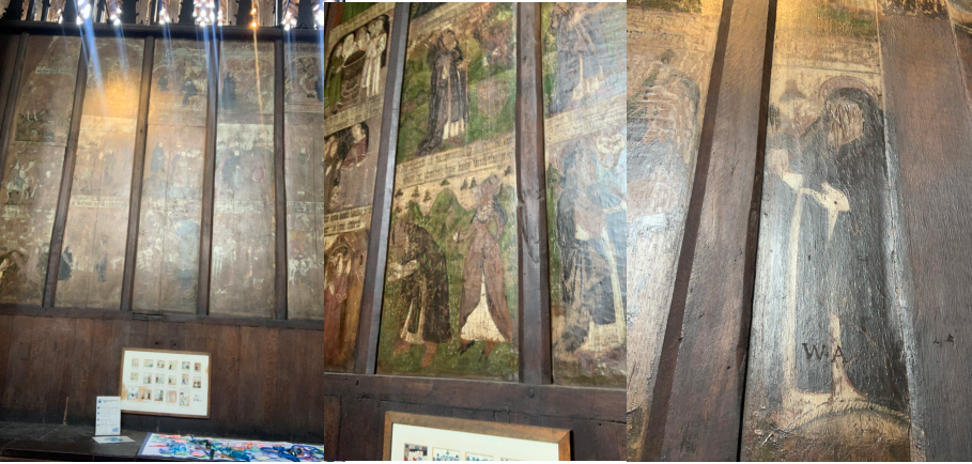Ways of Knowing in the Past Part 4
06 April, 2023, Jennifer Jenkins
Hagiography
Having always enjoyed biographies of inspirational figures, I was interested to find this isn’t a new phenomenon. In fact, it seems an important source for theological learning in the past is ‘hagiography’. Hagiography refers to writing about the lives of saints, combining the Greek words ‘hagi’, ‘holy’, and ‘graphy’, ‘writing’. Hagiographic texts are a unique biographical writing form, not offering a strictly historical account of a saint’s life but with the aim of assisting the reader in their own salvation.
A hagiography might not mention dates or places of birth, but details which show the saint’s exemplary Christian life, inspiring in others ideas about their own salvation. Hagiographic writing was common in the early church, with collections forming over the centuries.
Hagiographies often included the stories of those who had been saved from a life of ‘sin’, such as Moses the Black (saved from a life of violence) and Mary of Egypt (saved from a life of sexual liberty). Check out these two saints; wow! Often in hagiographic writing the saints are portrayed as without sin, suggesting a miraculous dimension to their lives. In Medieval times, the ‘Vitas’, or ‘life stories’, became a source of biblical education for ordinary people.
Hagiographies provided an important source of Christian education for ordinary people, along with church windows and story-telling. The merging of Christian belief with earlier mythology is not uncommon. Images of the Egyptian goddess Isis with her son Horus bear a strong resemblance to early Christian icons of the Madonna and Child. A weaving together of saints’ lives and social concerns are visible in the modern age. St Perpetua was an early Christian martyr who was executed alongside Saint Felicity. They died clinging onto each other have been adopted as patron saints of same-sex relationships. Perpetua dreamt she was transformed into a man and this has led to her being adopted by the Christian Trans community as an icon.
Hagiographic icons, or images, became a form of theological storytelling. Dating from the 12th & 13th century onwards they depict a saint and scenes from their life. They are ‘read’ much like a book, allowing ordinary people to learn for themselves, even if they cannot read.
Hagiographic icons reached their golden era in the fifteenth century. They were particularly popular in Orthodox Russian and Slavic regions, as well as in pre-Protestant Britain. 14th Century icons of St Anthony and St Cuthbert in Carlisle cathedral survived the Reformation, although their faces have been scratched out. They were later painted over by people fearing idolatry, but have been discovered and restored. Through panels such as these, ordinary people learnt about saints, God and themselves.

The panels showing the lives of St Cuthbert & St Anthony of Egypt, the faces scratched out. Images by Jen Jenkins, used with permission.
The panels showing the lives of St Cuthbert & St Anthony of Egypt, the faces scratched out Images by Jen Jenkins, used with permission
I wonder what a modern equivalent of hagiography might be for Christians today? Twitter? Pinterest? For medieval Christians the vitas and hagiographies provided information, inspiration and hope. I was interested to read recently that the Indic Traditions have similar stories of spiritual heroes and holy people, to provide a similar role. I wonder why knowing about those who have trod our own spiritual path seems so important? Does it help us to understand the beliefs that shape our lives and worldviews? I also wonder if we are as ready to learn about and from others as those in centuries past.